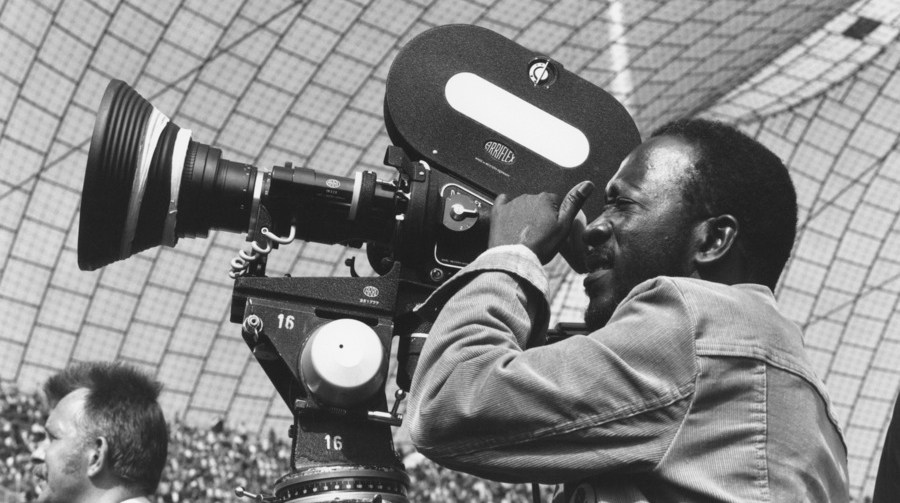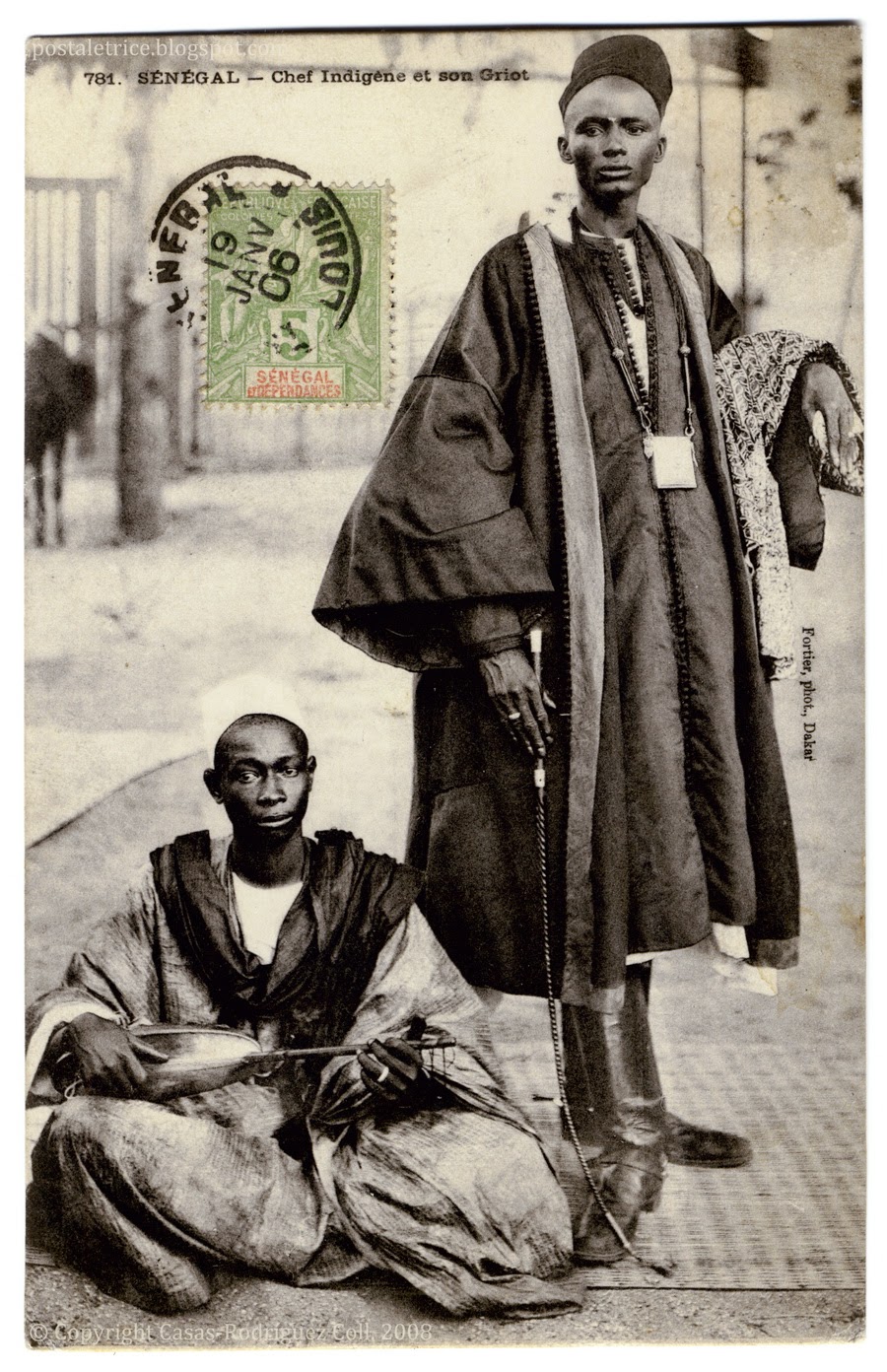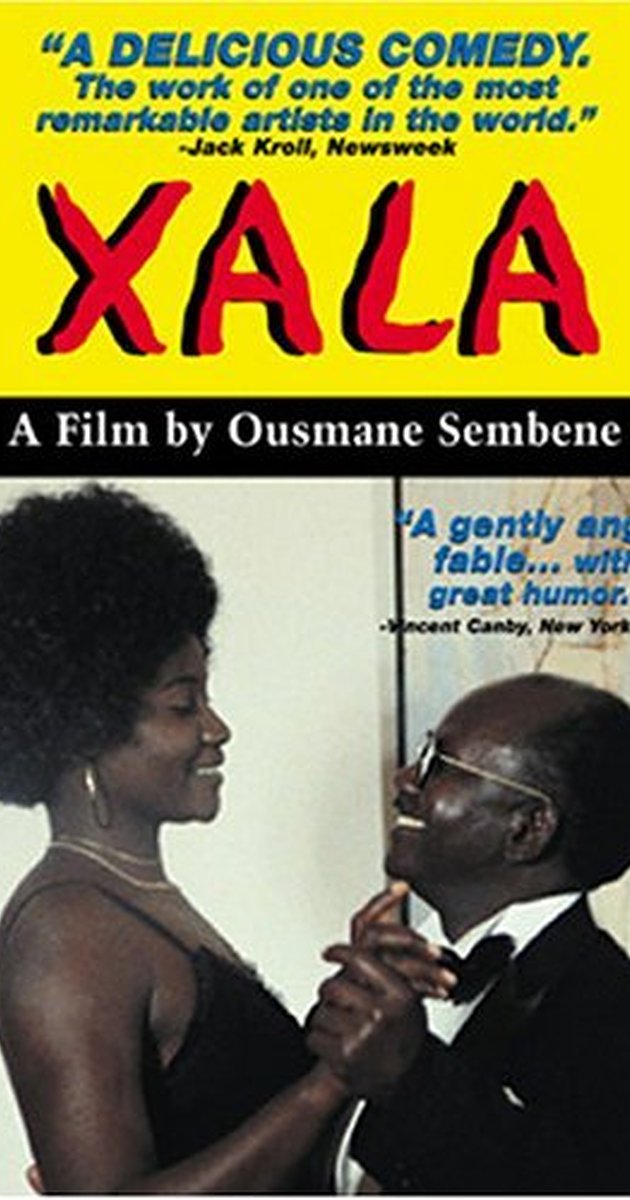“To produce a film in Africa is an act of resistance…it is also about making Africans realize that cinema is a powerful tool for development.” - Balufu Bakupa-Kanyinda
Ousmane Sembene was a ‘self-taught” man who was born a fisherman’s son in Southern Senegal. He took manual jobs until the French Army of West Africa recruited him. On his discharge, he moved to France in 1947 where he worked on the docks in Marseille up until 1960.
Soon after Senegal’s independence from the French in 1961, he decided that he wanted to make films and took the opportunity of a scholarship to train at the Gorky studios in Moscow. He returned to his country in 1962 with an old Russian camera and a desire to put “ordinary Africans” onto the screen.
Having written books prior to making films, Literature was his first choice of artistic expression. But Sembène realized his written works were only accessible to the cultural elites and decided to make films to reach a broader African audience. He started using whatever was accessible to make his films including pieces of scrapped and expired film that was sent to him from his friends in Europe. He worked with non-actors, using natural light and filmed on the open streets of Senegal showing African life through an African lens.
The mechanisms of Sembene’s film closely resemble neo-realist cinema but Sembène also incorporated other traditional ways of story telling in his films; the most notable of which is the Griot.
The West African Griots.
Before the written word became a prevalent form of self-expression in West Africa, the griot served as the oral historian, musician and entertainer of the community. The function of the griot is a complex mixture of storytelling, historical preservation, and performance. He belonged to the lowest caste, yet, by virtue of his societal function, he was privy to much historical and political information. In fact, one of his assigned tasks was to preserve the history of the county through story and song.
Corruption of the Griot
The Guinean author Camara Laye once wrote the following about the griot.
“in truth, the griot (…) before being a historian is, above all, an artist. Therefore, it would follow that his songs, chants, poems and legend are all works of art. The oral tradition is more closely related to art than science. Exactly like the African sculptor, the historical reality placed in front of the griot is not always told as it is.”
This quote describes the ‘artistic’ license taken by griots when recounting historic narratives in society. During the colonial period, this ‘artistic license’ became even more subjective and problematic - since storytelling was how the griot made his living, his stories often changed according to the social or political agenda of his patron. The role of the griot can be compared to that of a Renaissance artist forced, by virtue of his social standing and profession, to seek patronage from wealthy noblemen in order to pursue his own artists projects. However, at a certain point, his projects no longer become his, and he is used purely as a political tool for those in power.
As West African countries, such as Senegal, sought to establish a national identity after the end of French colonial rule, the griot’s role became increasingly political. The role of the griot shifted along with the extreme sociopolitical change Senegal experienced during its emergence as a nation after independence. During this time, many self-proclaimed griots and artists emerged.
Semebene was one of the most prolific and influential members of this group of professional modern griots. By relating filmmaking to the West African griot, he calls for a reinterpretation of past griotic functions. In doing so, he both critiques and redefines the role of the griot in West African society.
Primarily, Sembene was concerned with redefining the griot as a character who upholds truth and justice in the face of moral corruption. He was in essence, attempting to create a “new-griotism” for modern Africa.
Whereas the griot of the past was an empty vessel into which historical information was poured, in order to be accessed by those in power. Semebene’s work exemplifies the ways in which a griot could use his information for the benefit of not only himself, but the proletariat as well.
XALA
Xala is a film Semebene adapted from his 1973 novel of the same name. Xala is a wolof word meaning temporary sexual impotence. The film depicts El Hadji, a businessman in Senegal, who is cursed with crippling erectile dysfunction upon the day of his marriage to his third wife. After postulating that the Xala (curse) was caused by his second wife, El Hadji realizes that it was in fact a beggar, which embodies the figure of the griot in the film, which had cursed him because El Hadji had stolen land that was rightfully his. The film satirizes the corruption in African post-independence governments and attracted a fair share of negative response from the Senegalese bourgeoisie leading up to the film being banned in Senegal. By exposing the truth regarding the monetary and moral corruption of the nouvelle-bourgeoisie, Semebene lessens their power within the societal framework, thus imposing a xala of sorts on the ruling class.
CAMP DE THIAROYE
In 1988, another one of Semebne’s films, Camp de Thiaroye, was also banned in France because it depicted the mass killing of French West African troops by French forces on the night of November 30 to December 1, 1944.
It can be argued Sembene’s films serve griotic functions by critically reframing African history, culture and identity. But ironically, Sembene was regularly faced with the challenge of striking a delicate balance between appeasing the mainly French funders of his film projects and his own aspirations for a truthful griot.





